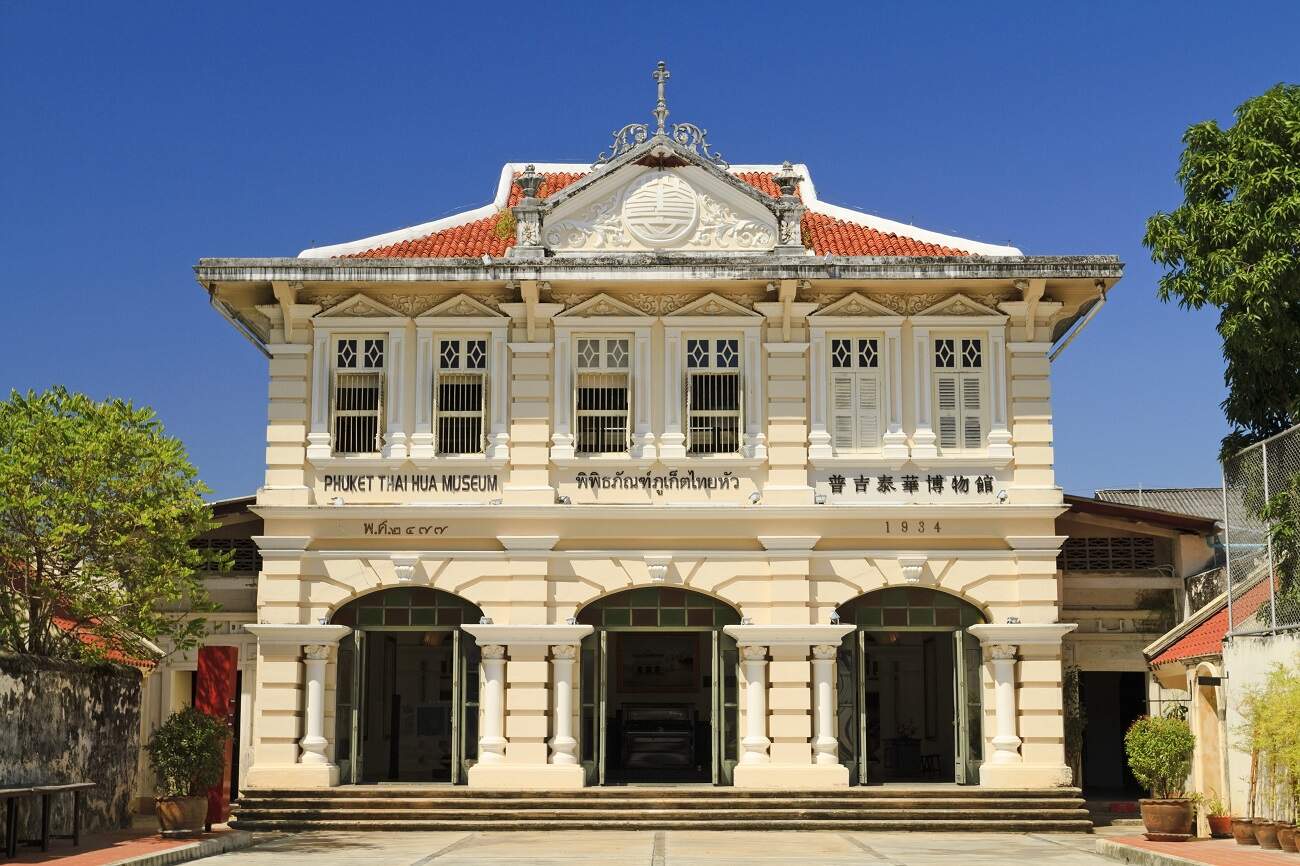When travelers think of Phuket, turquoise waters and sun-drenched beaches often spring to mind. But beyond its postcard-perfect shores, this island tells a deeper story—one shaped by centuries of tin mining, global trade, and a vibrant cultural fusion of Thai, Chinese, Malay, and Western influences. Tucked away in its hillsides and colonial streets are museums that showcase the soul of the island, each offering a window into the lives and legacies of those who shaped Phuket’s past.
As Phuket continues to grow as a premier travel destination, visitors are increasingly seeking experiences that go beyond the beach. In 2024 alone, the island welcomed approximately 8.65 million tourists, marking a 23% increase from the previous year, according to the February 2025 Phuket Hotel Market Review by C9 Hotelworks. This surge reflects a growing appetite for authentic, cultural exploration—a trend that makes Phuket’s remarkable museums more relevant than ever.
Phuket’s Story Told Through Its Museums
1. The Mining Legacy and Early Industry

Phuket’s economic foundation was built on tin. In Kathu, the Phuket Mining Museum captures this legacy with striking dioramas and antique mining equipment that transport visitors back to the island’s industrial heyday. The grand Sino-Portuguese building that houses the museum is a nod to the cultural blend that emerged during the mining boom.
Meanwhile, the Thalang National Museum delves deeper into history, with exhibits on the ancient Battle of Thalang, where brave local heroines defended the island against Burmese invaders. Prehistoric artifacts and historical recreations provide a sweeping overview of the island’s evolution.
Equally fascinating is the Phuket Cultural Center at Phuket Rajabhat University. This lesser-known gem offers a curated journey through traditional Thai life, the region’s Buddhist heritage, and the customs of Phuket’s Chinese-Thai community. From vintage farming tools to a recreated traditional house, the center provides a classroom-like immersion into local culture.
2. Chinese Influence and Sino-Portuguese Identity

The Chinese community has played a profound role in shaping Phuket’s identity, and no place tells this story better than the Phuket Thai Hua Museum. Once a Chinese-language school, this beautifully restored Sino-Portuguese structure in Phuket Old Town now chronicles the arrival of Chinese immigrants, their contributions to trade and society, and the preservation of their cultural roots.
Just a short walk away is Chinpracha House, a living museum that offers an intimate look at the lavish lifestyle of a wealthy Chinese-Thai family. Visitors can explore vintage Italian tiles, antique furniture, and personal heirlooms—all lovingly maintained to reflect the elegance of early 20th-century Phuket.
To dive even deeper into Chinese-Malay culture, the Peranakan Phuket Museum provides insight into the vibrant traditions of the Baba-Nyonya community. Intricately embroidered costumes, ornate jewelry, and household items reveal a culture that’s as colorful as it is enduring.
Related article: The Influence of Peranakan Culture in Phuket
3. Everyday Phuket: Community and Communication
While grand mansions and industrial histories are captivating, the quieter stories of daily life are just as enriching. The Thavorn Museum, tucked inside the Thavorn Hotel in Phuket Town, is a delightful time capsule. With everything from vintage radios to ceremonial garb, it offers an eclectic and sometimes quirky look at the island’s bygone days.
Equally charming is the Phuket Philatelic Museum, located in the old post office building. This small but informative space showcases Thailand’s postal history, complete with antique communication tools and nostalgic displays that document how people once stayed connected.
For a more personal touch, the Baan Ar Jor House Museum is a beautifully restored heritage home. Each room is filled with family heirlooms, stories, and loving details that speak to the importance of preserving Phuket’s cultural identity.
Lastly, the Kathu Museum may be modest in scale, but it offers invaluable insight into the local history of the Kathu district. Focused on community life and the tin-mining era, it rounds out the picture of Phuket as a place shaped not just by industry and immigration, but by resilience and community spirit.
Tips for Exploring Phuket’s Cultural Gems

To get the most out of a museum-hopping experience in Phuket, it’s best to plan your visits around the charming streets of Phuket Old Town. Walking tours that include nearby markets and colonial architecture pair perfectly with museum stops, creating a well-rounded cultural itinerary.
The best time to explore these heritage sites is between November and April, when the weather is cooler and most attractions operate without interruption. Weekday mornings tend to be quieter, offering a more relaxed and immersive experience.
Related article: When is the Best Time to Visit Phuket
Don’t forget to support local cafes and artisan shops scattered near the museum areas—they not only add flavor to your day but also help sustain the island’s creative communities. For those eager to gain deeper insights, consider joining a guided cultural tour or hiring a local expert.
Whether you’re staying in a resort or one of the elegant Phuket holiday homes, carving out time for these cultural stops will bring new depth to your island getaway.
A Journey Through Time and Tradition
Phuket’s museums are more than just buildings filled with artifacts—they’re storytellers, guardians of memory, and bridges between generations. They reveal a side of the island that many overlook: one built on perseverance, diversity, and deep cultural roots.
By stepping into these remarkable spaces, travelers not only enrich their own journeys but also honor the legacy of Phuket’s past. So the next time the island’s turquoise waters beckon, be sure to also listen to the voices of its history—preserved lovingly in its museums for all to discover.
–
Featured Image by Globaleur





